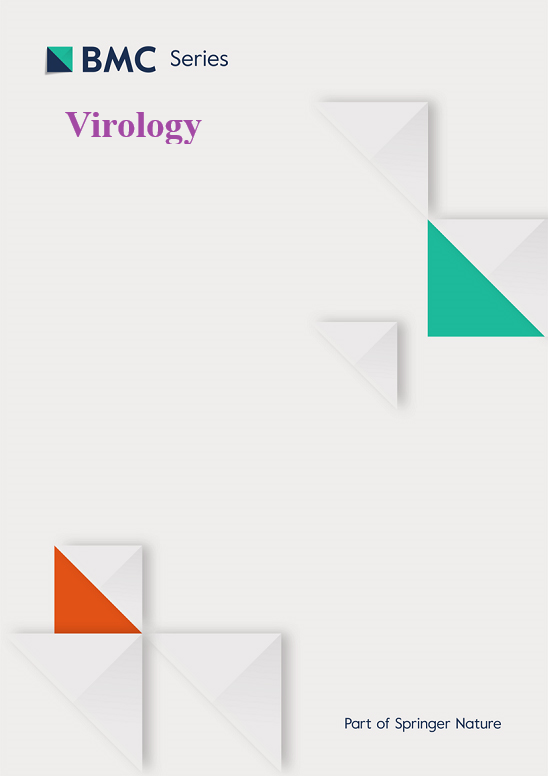评估商业疫苗对哈萨克斯坦突发H5N8(分支2.3.4.4b)禽流感病毒的有效性和传播控制
IF 2.8
3区 医学
Q3 VIROLOGY
引用次数: 0
摘要
高致病性禽流感H5N8(进化支2.3.4.4b)在全球(包括哈萨克斯坦)造成了毁灭性的家禽疫情,这突出表明需要疫苗来保护鸟类和遏制病毒传播。我们评估了三种商用H5疫苗和一种实验性同源H5N8疫苗在鸡中的有效性。方法接种4种疫苗(3种市售疫苗和1种实验疫苗),在4周内测定抗体滴度。在接种疫苗后30天,用一种强毒的H5N8毒株对禽类进行鼻内攻击,并监测10天的存活和临床体征。在气管和泄殖腔拭子中(攻毒后第1、3、5天)检测病毒滴度,并将未接种疫苗的哨点鸡放在一起饲养以评估传播情况。结果同源的H5N8疫苗和一种密切相关的商品化疫苗可引起快速、高抗体反应,并可获得100%的存活率。相比之下,与攻毒株抗原相似性较低的两种疫苗引起的免疫反应较慢,免疫力较低,导致40 - 60%的死亡率和较高的病毒脱落。只有同源疫苗显著减少了病毒的脱落并限制了接触鸟的传播(保护了3只哨鸟中的2只),而其他疫苗未能阻止传播。结论一种抗原匹配的强效佐剂H5N8疫苗具有接近绝育的免疫功能,可预防疾病,并显著限制病毒的脱落和传播。这些发现强调了在高致病性禽流感控制策略中使用毒株匹配疫苗以避免病毒在接种疫苗的禽群中无声传播的重要性。本文章由计算机程序翻译,如有差异,请以英文原文为准。
Evaluation of commercial vaccines for efficacy and transmission control against the emergent H5N8 (clade 2.3.4.4b) avian influenza virus in Kazakhstan
Introduction
Highly pathogenic avian influenza H5N8 (clade 2.3.4.4b) has caused devastating poultry outbreaks globally, including in Kazakhstan, underscoring the need for vaccines that protect birds and curb virus transmission. We evaluated the efficacy of three commercial H5 vaccines and an experimental homologous H5N8 vaccine in chickens.
Methods
Chickens received a single dose of each of the four vaccines (three commercial and one experimental), and antibody titers were measured over 4 weeks. At 30 days post-vaccination, birds were challenged intranasally with a virulent H5N8 strain and monitored for 10 days for survival and clinical signs. Virus titers in tracheal and cloacal swabs (days 1, 3, 5 post-challenge) measured shedding, and unvaccinated sentinel chickens were co-housed to assess transmission.
Results
The homologous H5N8 vaccine and a closely related commercial vaccine elicited rapid, high antibody responses and conferred 100 % survival. In contrast, two vaccines with lower antigenic similarity to the challenge strain induced slower, lower immunity, resulting in 40–60 % mortality and higher virus shedding. Only the homologous vaccine markedly reduced viral shedding and limited transmission to contact birds (protecting 2 of 3 sentinel birds), whereas the other vaccines failed to prevent transmission.
Conclusion
An antigenically matched H5N8 vaccine with a potent adjuvant provided near-sterilizing immunity, preventing disease and significantly limiting viral shedding and transmission. These findings highlight the importance of using strain-matched vaccines in HPAI control strategies to avoid silent viral spread in vaccinated flocks.
求助全文
通过发布文献求助,成功后即可免费获取论文全文。
去求助
来源期刊

Virology
医学-病毒学
CiteScore
6.00
自引率
0.00%
发文量
157
审稿时长
50 days
期刊介绍:
Launched in 1955, Virology is a broad and inclusive journal that welcomes submissions on all aspects of virology including plant, animal, microbial and human viruses. The journal publishes basic research as well as pre-clinical and clinical studies of vaccines, anti-viral drugs and their development, anti-viral therapies, and computational studies of virus infections. Any submission that is of broad interest to the community of virologists/vaccinologists and reporting scientifically accurate and valuable research will be considered for publication, including negative findings and multidisciplinary work.Virology is open to reviews, research manuscripts, short communication, registered reports as well as follow-up manuscripts.
 求助内容:
求助内容: 应助结果提醒方式:
应助结果提醒方式:


